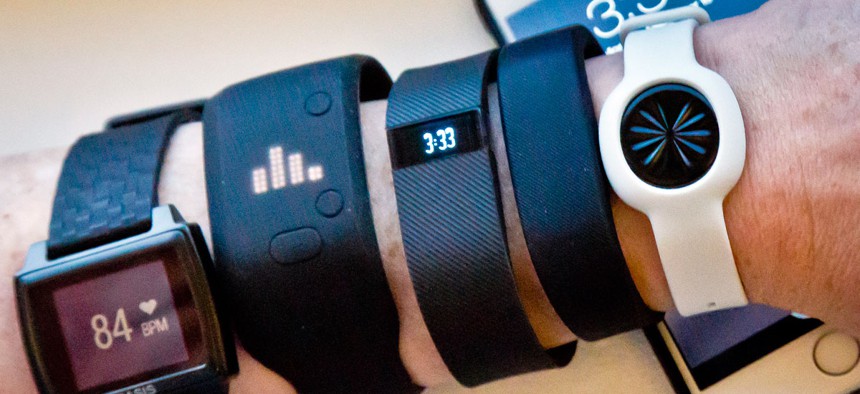The Promise of Wearables in Law Enforcement

Fitness trackers, from left, Basis Peak, Adidas Fit Smart, Fitbit Charge, Sony SmartBand, and Jawbone Move, are posed for a photo next to an iPhone. Bebeto Matthews/AP
A wrist-worn device could tip off a dispatcher if a law enforcement official appears to be in danger.
Customs and Border Protection Chief Technology Officer Wolf Tombe thinks wrist-worn fitness trackers -- like the Fitbit or the Samsung Gear Fit he wears -- could enhance law enforcement agencies' ability to respond to officers' needs.
During a recent panel, Tombe described how the device, which automatically monitors biometric factors such as heart rate and steps taken, could tip off a dispatcher about each officer's physical condition.
For instance, if Tombe's baseline heart rate was usually 60 beats per minute, “what if my heart rate . . . went to over 100 beats?"
A sophisticated, connected system of wearable devices could send a text alert to dispatchers or other responders, notifying them an officer might be in jeopardy. Those devices could also be connected to a virtual map of dispatched officers, automatically changing their status from a green dot to a red one if the device senses the wearer is in danger, he added.
"That kind of data has true power," Tombe said.
Later in the panel, Tombe added that he was also interested in fabric that can detect the force of impact experienced by the wearer. This kind of technology is currently marketed to children's sports teams, especially to detect potential damage caused by flung baseball bats, but it could be especially useful in law enforcement, he said.
NEXT STORY: Driverless Cars Are Coming. Is Congress Ready?





